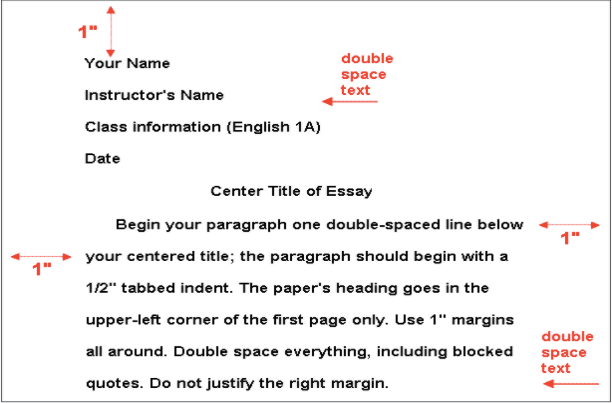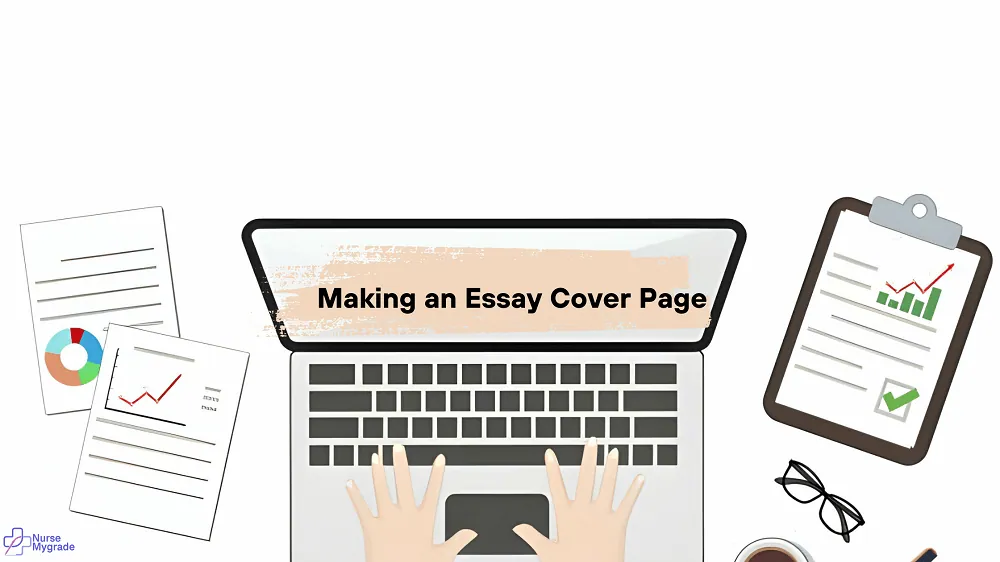Essay Cover Page – Elevate Your Essay Presentation!
When you write an essay, you want it to look professional, right? That’s where the essay cover page comes in. It’s like the face of your essay, showing important stuff like the title, your name, and when you wrote it. But why is it so important? Let’s find out!
So, An essay cover page is the first page of your essay that shows important details like the title, author’s name, and date. It’s like the introduction to your essay, giving readers a sneak peek into what they’re about to read. This page sets the tone for your essay and helps organize your work.
What Is An Essay Cover Page? – Learn The Basics First!
An essay cover page serves as the introductory page of your essay, presenting vital information about the author, the title of the essay, course details, the instructor’s name, and the institution. Beyond being a formal introduction, it acts as a gateway for readers, providing essential context and setting the tone for the entire document.
When a reader encounters your essay cover page, they should immediately gain insight into the subject matter and the authorship. This first impression can significantly impact how your work is perceived, making the cover page a crucial element in academic and professional writing.
Why Do I Need To Include A Cover Page In My Essay?
The inclusion of a cover page in your essay serves several important purposes. Firstly, it adds a layer of professionalism and organization to your work, indicating to readers that you’ve meticulously prepared and presented your essay.
Additionally, an Essay Cover Page ensures that all pertinent information about the essay is readily accessible, streamlining the process for both readers and evaluators.
From an academic standpoint, a well-designed Essay Cover Page demonstrates your attention to detail and adherence to academic standards. It shows that you’ve followed the guidelines provided by your institution or instructor, enhancing your credibility as a writer.
Moreover, in professional settings, such as submitting essays for publication or job applications that require writing samples, a polished cover page can make your work stand out among others. It conveys a sense of professionalism and competence, leaving a lasting impression on potential employers or publishers.
Read: Slice Master – Play It Online At Coolmath Games!
How Do I Format An Essay Cover Page?

Formatting an essay cover page requires attention to detail and adherence to specific guidelines dictated by your institution or the citation style you’re following (e.g., APA, MLA, Chicago). While there may be slight variations depending on the style, the basic elements typically remain consistent.
Begin by center-aligning the title of your Essay Cover Page at the top of the page, followed by your name, course name and number, instructor’s name, and the date of submission, each on separate lines.
Ensure that the text is presented in a clear and legible font, such as Times New Roman or Arial, and maintain consistency in font size and spacing throughout the cover page.
Depending on the citation style you’re using, there may be additional requirements, such as including a running head in APA style or aligning the title differently in MLA style. Be sure to consult the specific guidelines provided by your institution or the relevant style manual to ensure accurate formatting.
Does Every Essay Require A Cover Page?
While including a Essay Cover Page is generally recommended for formal academic essays or papers submitted for publication, it ultimately depends on the requirements set forth by your instructor or institution. Some assignments may explicitly specify the inclusion of a cover page, while others may not require it.
However, even if a cover page is not mandatory, opting to include one can still enhance the professionalism and organization of your essay. It provides a structured format for presenting essential information about your work, making it easier for readers to navigate and reference.
When Should I Include A Cover Page In My Essay?
The decision to include a cover page in your essay should be guided by the specific requirements outlined in the assignment instructions or dictated by the citation style you’re following. If the assignment guidelines specify the inclusion of a cover page, be sure to include it as part of your submission.
Additionally, even if not explicitly required, you may choose to include a cover page to enhance the presentation and professionalism of your work. In academic settings, particularly for longer or more formal essays, a cover page can help set the tone for your writing and establish a sense of credibility with your audience.
Where Should I Place The Cover Page In My Essay?

The cover page should precede the main body of your essay, appearing as the first page of your document. It serves as the initial point of contact for readers, introducing them to the content and providing essential details about the authorship and context of the essay.
When formatting your document, ensure that the cover page is positioned before the introduction or any other sections of the essay. This placement ensures that readers encounter the cover page first, allowing them to quickly access the necessary information before delving into the main content of the essay.
What Information Should Be Included On An Essay Cover Page?
An essay cover page typically includes key information about the author, the title of the essay, course details, the instructor’s name, and the institution. Each piece of information serves a specific purpose, providing context and identifying the origin of the essay.
Author’s name:
Identifies the individual responsible for writing the essay.
Course name and number:
Specifies the academic course for which the essay was written.
Instructor’s name:
Indicates the instructor or professor overseeing the course.
Institution:
Denotes the academic institution or organization with which the author is affiliated.
Date of submission:
Specifies the date on which the essay was submitted for evaluation.
In addition to these standard elements, specific assignment guidelines or citation styles may require additional information, such as institutional affiliations or department names. Be sure to consult the appropriate style guide or instructor for clarification on any additional requirements.
How Can I Make My Essay Cover Page Look Professional?

Achieving a professional-looking cover page involves attention to detail and adherence to specific formatting guidelines. To enhance the professionalism of your cover page, consider the following tips:
Use a clear and legible font:
Choose a font style and size that is easy to read and professional in appearance, such as Times New Roman, Arial, or Calibri.
Maintain consistency:
Ensure consistency in font size, spacing, and alignment throughout the cover page to create a cohesive and polished look.
Center-align the text:
Also, Center-align the title of the essay and other elements on the cover page to create a visually balanced layout.
Pay attention to spacing:
Use appropriate spacing between lines and elements to improve readability and organization.
Follow citation style guidelines:
Adhere to the specific formatting requirements outlined in the citation style you’re using (e.g., APA, MLA, Chicago) to ensure accuracy and consistency.
Avoid clutter:
Keep the cover page clean and uncluttered by including only essential information and avoiding unnecessary graphics or decorations.
By following these guidelines and paying attention to detail, you can create a professional-looking cover page that enhances the overall presentation of your essay and leaves a positive impression on your readers and evaluators.
What Is The Difference Between A Cover Page And A Title Page?
While the terms “cover page” and “title page” are often used interchangeably, there may be subtle differences in their usage depending on the context or formatting guidelines. In general, both cover pages and title pages serve the purpose of providing essential information about the document, such as the title, authorship, and context.
However, a cover page may be more commonly associated with formal reports or academic papers, where it serves as a standalone page preceding the main body of the document. In contrast, a title page may be considered part of the first page of the document itself, containing the title, author’s name, and other pertinent details.
The distinction between a cover page and a title page may vary depending on the specific requirements or conventions of the document format or citation style being used. It’s essential to consult the relevant guidelines or instructions to ensure accurate formatting and adherence to established conventions.
Does The Formatting Of The Cover Page Depend On The Citation Style (Apa, Mla, Etc.)?

Yes, the formatting of the cover page may vary depending on the citation style you’re using, such as APA, MLA, Chicago, or Harvard. Each citation style has its own specific guidelines for formatting cover pages, including requirements for font, spacing, alignment, and content arrangement.
For example, in APA style, the cover page typically includes a running head, which is a shortened version of the essay title, aligned left in all capital letters. In MLA style, the cover page may include the title of the essay, author’s name, instructor’s name, course name and number, and date, centered on the page.
To ensure accurate formatting, it’s crucial to consult the appropriate style guide for your chosen citation style and follow the guidelines provided. By adhering to the specified formatting requirements, you can create a cover page that meets the standards of academic integrity and professionalism expected in scholarly writing.
FAQs:
Do I need to include a cover page for every essay I write?
Not necessarily. Whether or not a cover page is required depends on the specific requirements provided by your instructor or institution. Always refer to the assignment guidelines for clarification on whether a cover page is necessary.
Can I use a template for creating my essay cover page?
Yes, using a template can be an effective way to ensure that your cover page is formatted correctly according to the requirements of your citation style. Many word processing programs offer built-in templates for cover pages, or you can find customizable templates online.
Is it necessary to include a running head on the cover page for APA style?
Yes, according to APA style guidelines, the cover page should include a running head, which is a shortened version of the essay title, aligned left in all capital letters. The running head should be preceded by the words “Running head:” followed by a shortened title (maximum 50 characters).
Conclusion:
Adding an essay cover page makes your writing look more professional and organized. It improves how your work is presented and makes a good impression on your readers and teachers.
By following the tips in this article and checking your school or citation style rules, you can make a cover page that introduces your essay well and impresses everyone who reads it. Just remember, paying close attention to details and following formatting rules are really important to make your cover page look polished and show that you’re serious about your writing.
Read Also:
